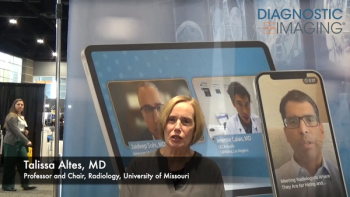
SuperSonic builds on breast elastrography
Elastrography forms the cornerstone of an ultrasound system unveiled by first-time RSNA exhibitor SuperSonic Imagine. The Aixplorer system is dedicated to breast imaging. It differentiates healthy from cancerous tissues by quantifying differences in the elasticity of the tissues. SuperSonic’s ShearWave Elastography technique produces consistent results regardless of the operator’s skill, according to the company.
Elastrography forms the cornerstone of an ultrasound system unveiled by first-time RSNA exhibitor SuperSonic Imagine. The Aixplorer system is dedicated to breast imaging. It differentiates healthy from cancerous tissues by quantifying differences in the elasticity of the tissues. SuperSonic's ShearWave Elastography technique produces consistent results regardless of the operator's skill, according to the company.
Jacques Souquet, Ph.D., former chief technology officer of ATL and later Philips Ultrasound, founded the company in April 2005 in Aix-en-Provence, France, the name source for the firm's new product. The company employs 92 people, including U.S. expatriates and French employees repatriated from the U.S.
Newsletter
Stay at the forefront of radiology with the Diagnostic Imaging newsletter, delivering the latest news, clinical insights, and imaging advancements for today’s radiologists.




























